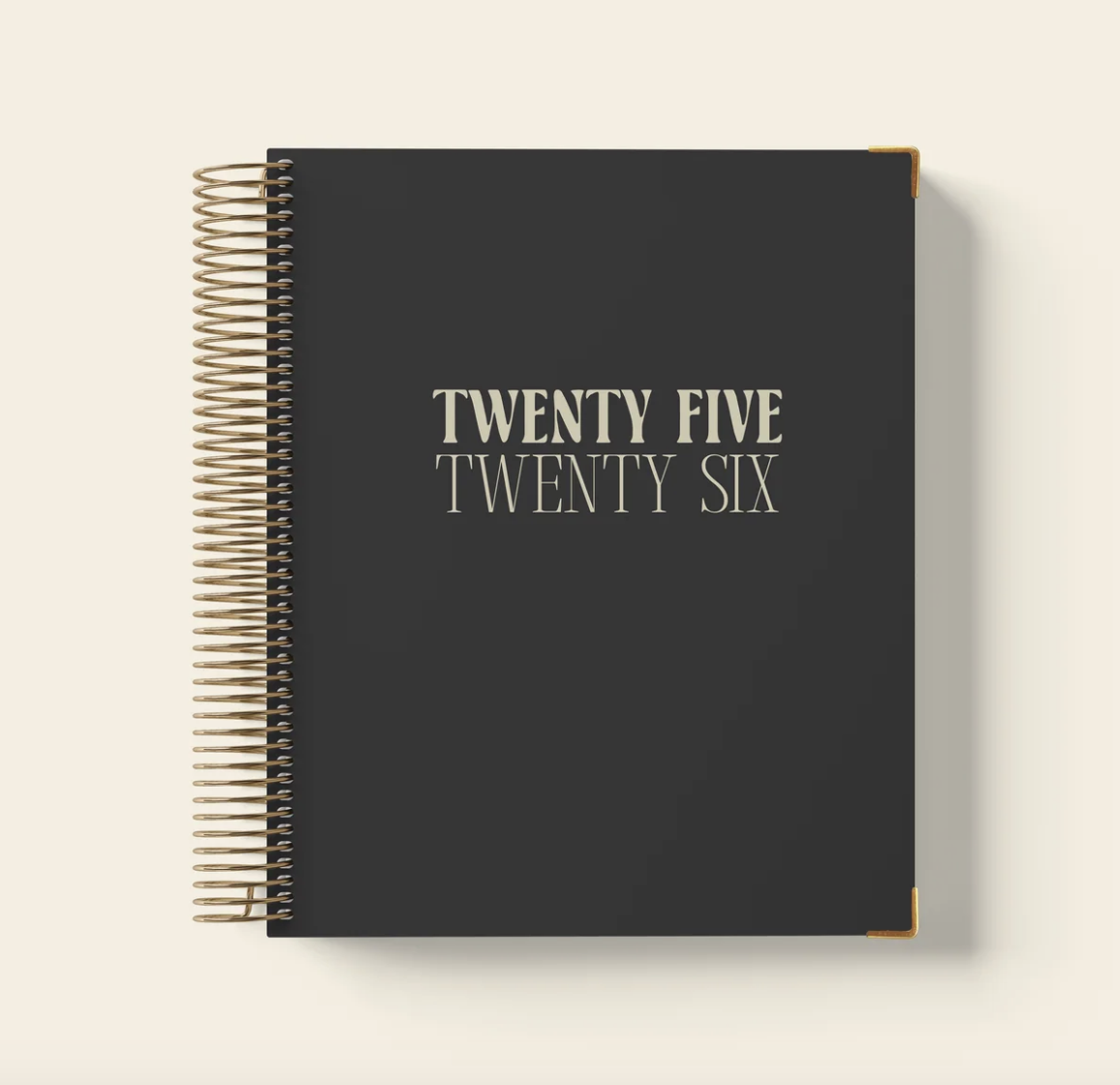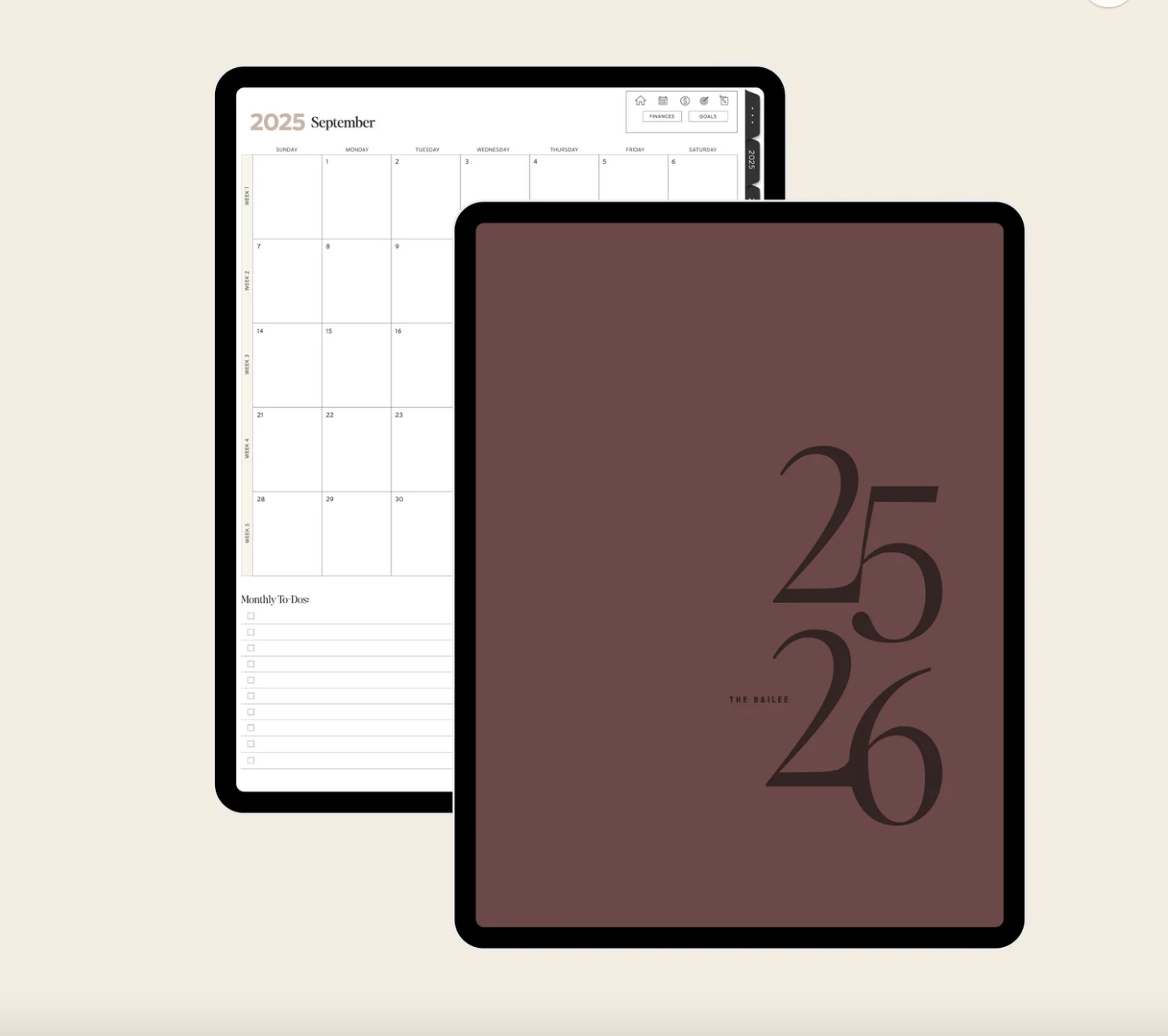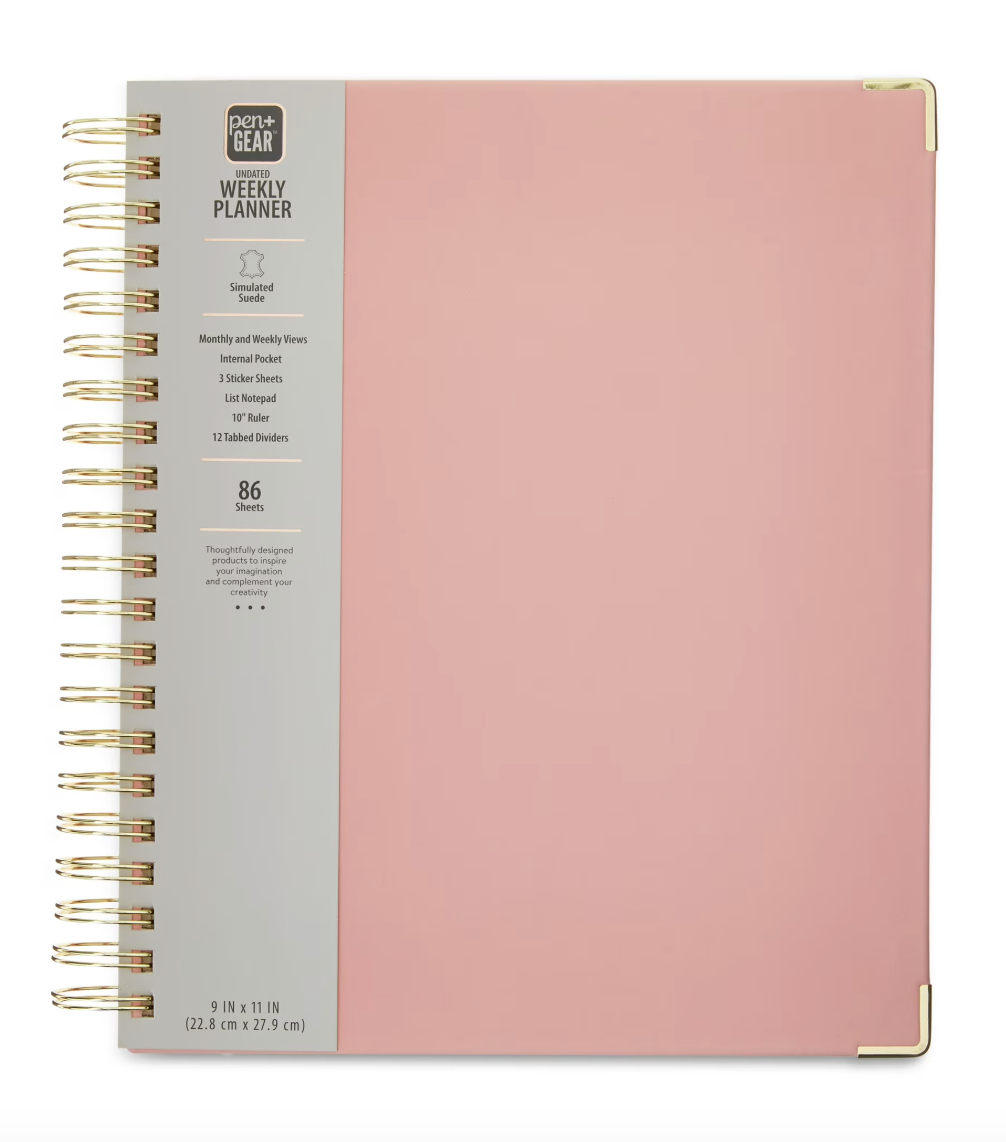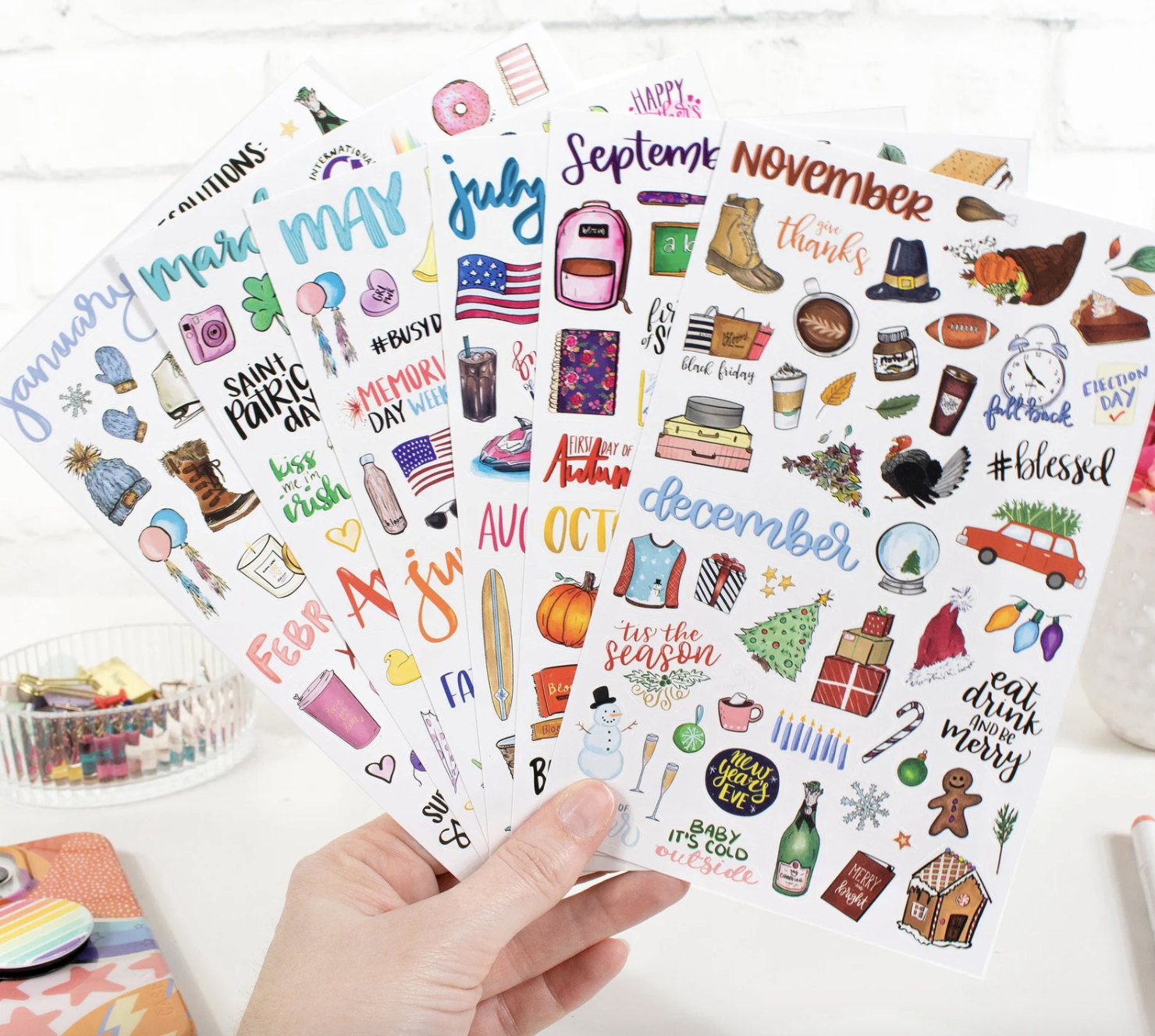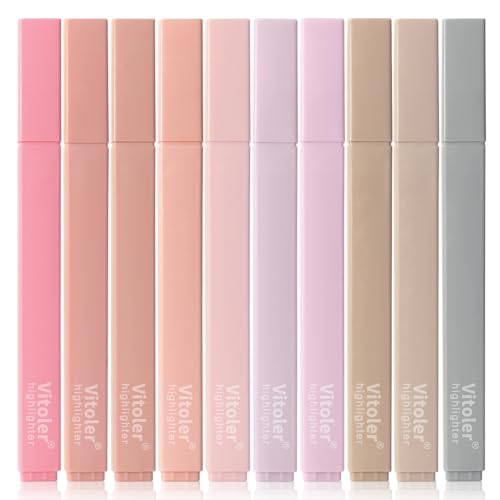
This post is all about how to organize a planner.
Whether you’ve used a planner before or you’re just dipping your toes in the idea of starting this new habit, buying a new planner is only the start… You need to know exactly how to organize a planner in a way that truly works for YOU.
The truth is, not everyone thrives off using a planner in the same way.
You might prefer using your planner to track simple life events, daily tasks, and due dates. Or, you might want to take it to the next level and use it for everything: finances, goal setting, and time blocking each day of your life.
Wherever you land, you can make a planner habit that works for you and improves your time management without it becoming an overwhelming routine to add to your schedule.
Let’s talk about how!
This post may contain affiliate links, which means I’ll earn a commission if you purchase through my link, at no extra cost to you. Our full disclosure policy is pretty boring, but you can read it here.
How do you actually structure your planner?
The way you structure your planner is going to be up to you. The first step is to decide your main purpose in using a planner.
For example, it could be to:
- Track due dates
- Keep a checklist of important tasks
- Stay on top of your schedule
- Remind yourself about important events like birthdays, weddings, and appointments
- Time block your day to maintain good time management
When you’ve got a clear goal in using a planner, you’ll be able to figure out the best way to structure your planner going forward. In this post, I’ll walk you through a step-by-step guide on how to organize a planner so you can figure out how to best structure it to make it work for you.
HOW TO ORGANIZE A PLANNER:
Decide on a planner that works for YOU
Now that you know the main reasons why you want to use a planner, it’s time to find the best planners for you.
You might be like me and need a planner that covers absolutely every aspect of daily life… Or maybe you just want something more minimalistic that will help you stay on top of your busy schedule.
Here are some things you might want to consider looking for in a planner:
- Monthly calendar
- Weekly overview
- Daily overview
- Daily time blocking sheets
- A section for passwords, phone numbers and essential emergency contacts
- Goal planning section
- Finance and budgeting sections
- Sections for to-do lists and brain dumps
- A weekly habit tracker
Decide which of these elements you need and which you don’t, and then look for a planner that is going to give you what you need (without going overboard).
Here’s a list of my favorite planners, whether you want it ALL or just want something basic:
- My favorite planner as a totally type A girl (I used this hardcover agenda for two years and loved it): The Dailee Paper Planner
- And the digital planner version (this is the one I use now, on my iPad)
- A great minimalist planner (I used one similar to this when I first started getting into my planner habit): Walmart Minimalist Planner
Create a monthly overview and task list
I recommend dedicating some time at the start of each month for monthly planner setup.
When I do this, I take the time to go through the entire upcoming month and write down everything I already know I have going on. I think about:
- Appointments that are coming up
- Events and important dates like weddings, birthdays, or concerts
- Trips I have planned
- Big deadlines I don’t want to forget
- Do-later tasks I know I want to get done this month that aren’t super urgent or don’t have a specific time constraint
I put all these into the monthly calendar section of my planner. This is a great way for me to see what’s coming up throughout the month at a quick glance!
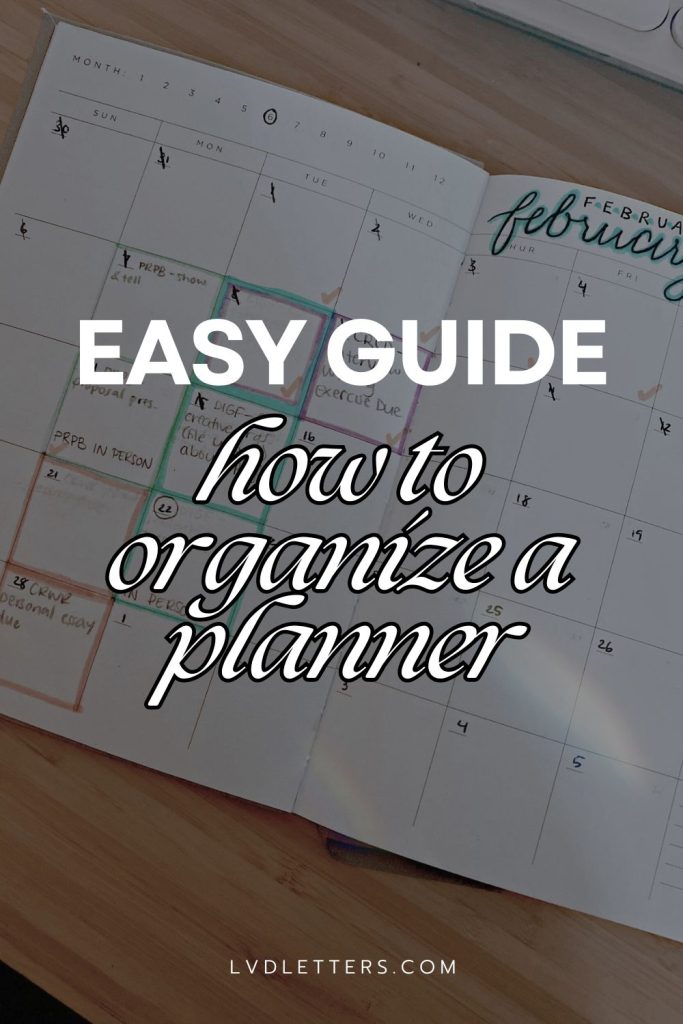
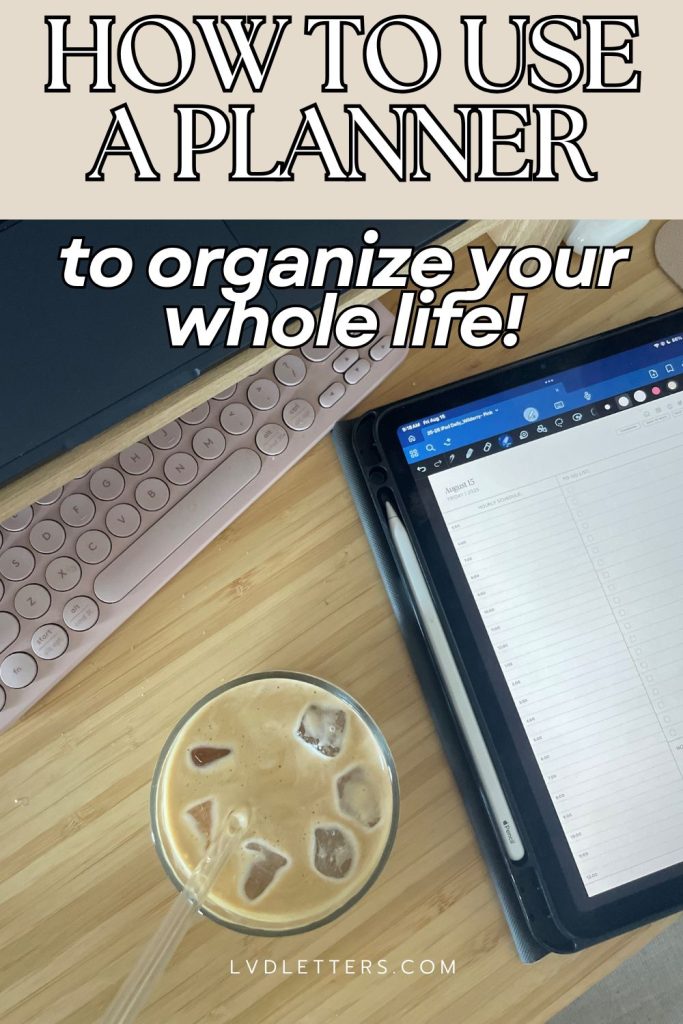
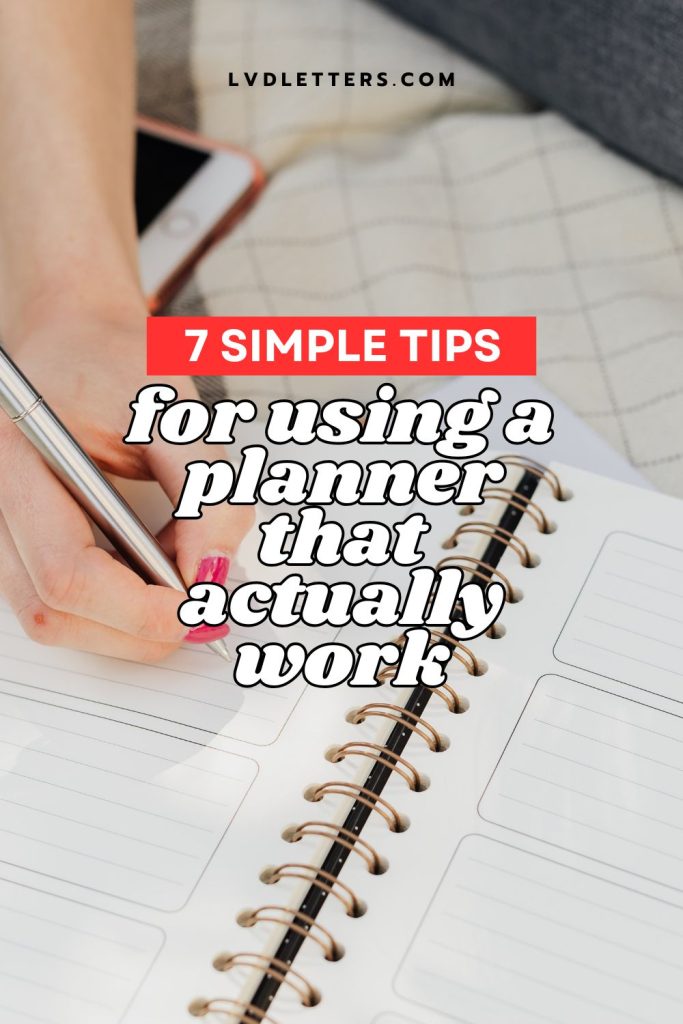
Create a weekly overview and task list
At the beginning of each week, set aside some time to put together your weekly overview. Some planners (like the one I use from the Dailee) have a dedicated weekly overview page, but even if yours doesn’t, you can still complete a weekly overview by going into each individual day’s section and writing anything major going on in the upcoming week.
Personally, I do this on Sunday evening but you could also do it Monday morning or anytime throughout the weekend!
Here’s what I put on my planner when I do my weekly overview:
- Major tasks I want to get done on the days I want to do them
- Three habits I plan to track throughout the week
- My workouts for each day
- Appointments I have coming up that week (including specific details like time and location)
- A loose plan of meal ideas throughout the week
- A grocery list of anything we need to buy that week
- Any random life admin tasks I need to get done, like calling the bank, paying a bill, or booking an appointment
Having this weekly spread is the key to having a well-organized planner because it will save you so much time whenever you’re making your daily schedule. You’ll already have an overview of the major things happening throughout the week which just makes it a million times easier to stay consistent with your tasks throughout the week (and consistency matters)!
Personalize your aesthetic
A great way to improve your planner journey and make it one you’ll actually stick to is to personalize your aesthetic.
Especially if you have a physical planner, get some fun stickers and pastel highlighters to make it feel like your own.
If you want to get really into it, you can even start color coding your tasks and plans. Or, you can simply use stickers and highlighters to create more colorful pages and make the process more fun!
If you’re a super visual person, this might be a really helpful way to make your planner setup process feel more like you.
Decide how you’ll use it daily
Now, we get into the daily use of your planner. Whether you’re simply using it to keep track of different tasks on your to-do list or you want to use it as a goal tracker, time blocker, or even to add motivational quotes, take a few minutes daily to plan out your day.
You can either do this each morning before you start your day, or you can take time every evening to plan out the next day.
During your daily planner sessions, you’ll want to just focus on the few things you want to get done that day, and create time blocks, if relevant. Don’t let this step take too long or you won’t keep up with it!
Create a consistent planner routine
The only perfect planner routine is the consistent planner routine.
The truth is, a planner is a great tool, but it’s basically useless if you’re not actually using it consistently.
You don’t need to have the most complex or aesthetic planning system to make it work for you. Just make sure you’re doing some kind of daily, monthly, and weekly review and using it to track your key tasks.
At the end of the day, it doesn’t matter what type of planner you have, as long as it’s a tool that truly helps you stick to your personal goals and stay productive throughout your life!


